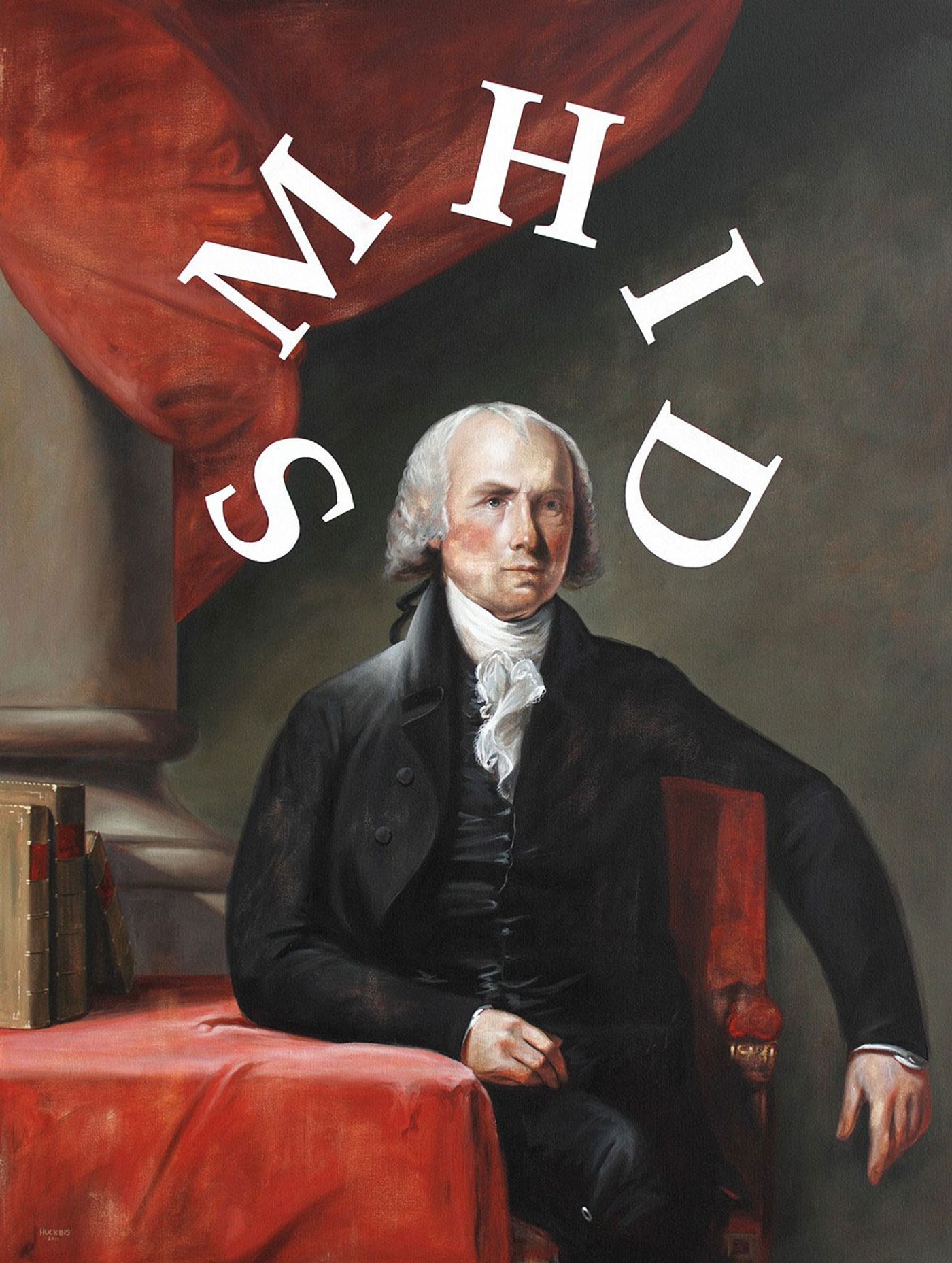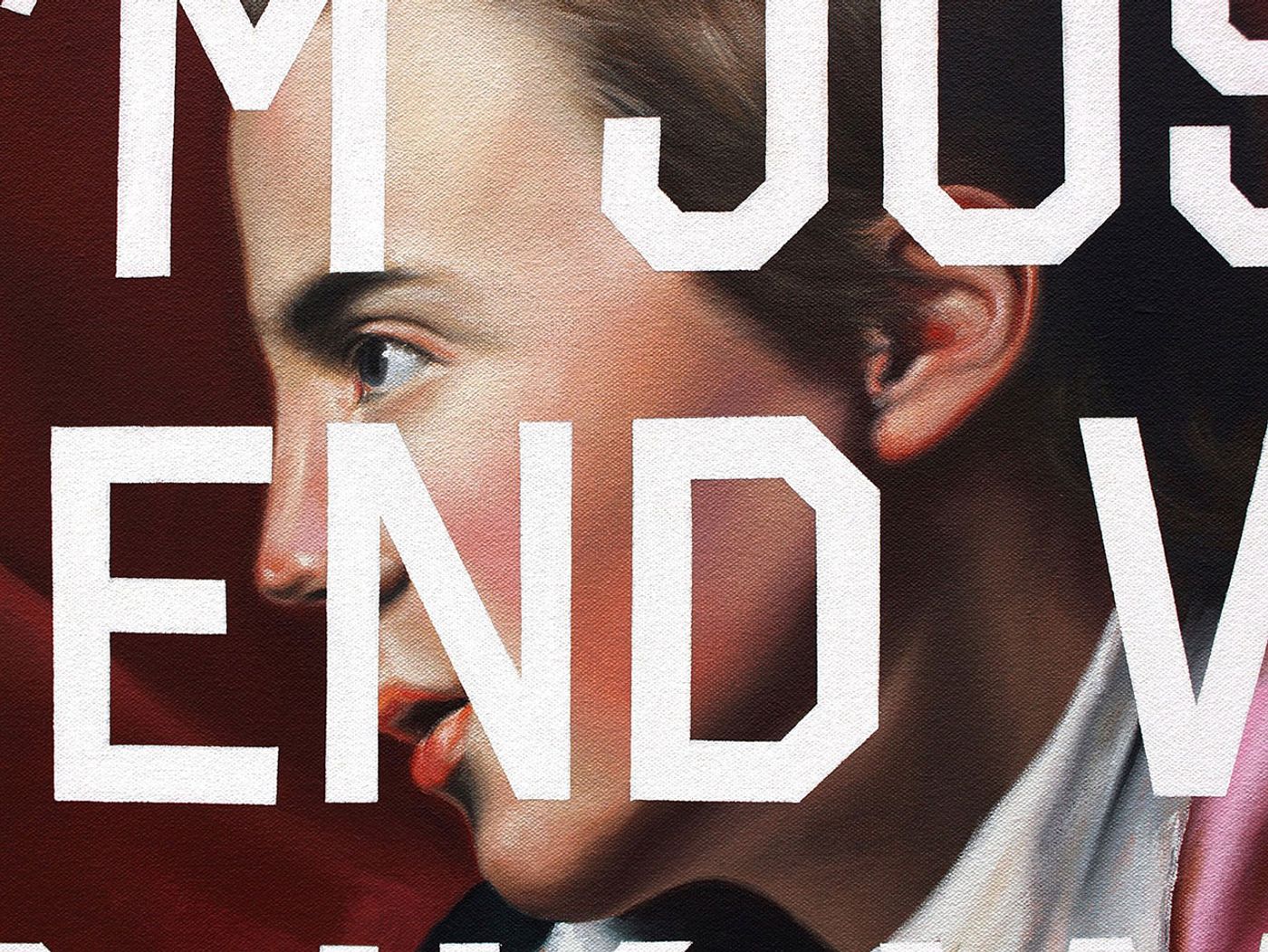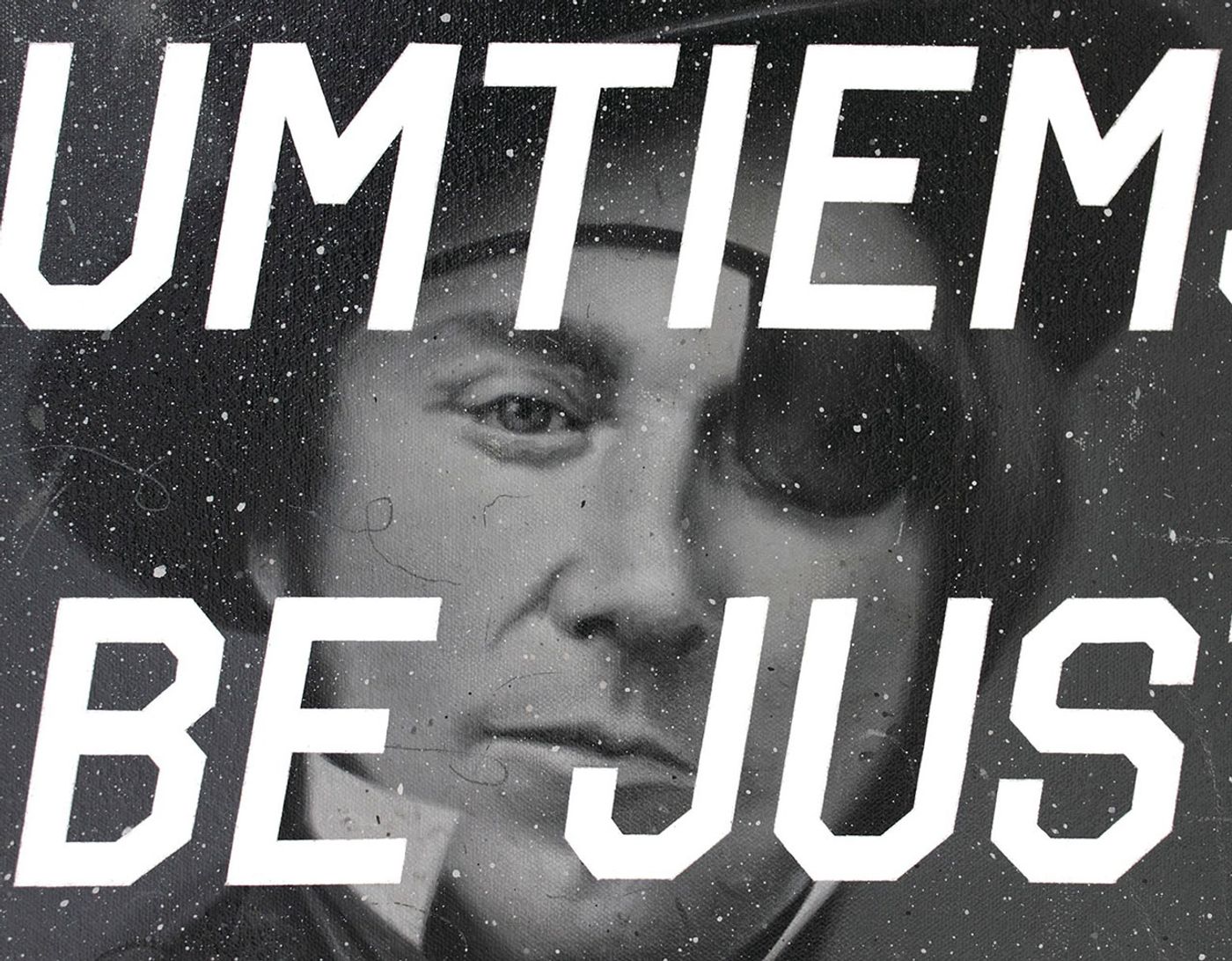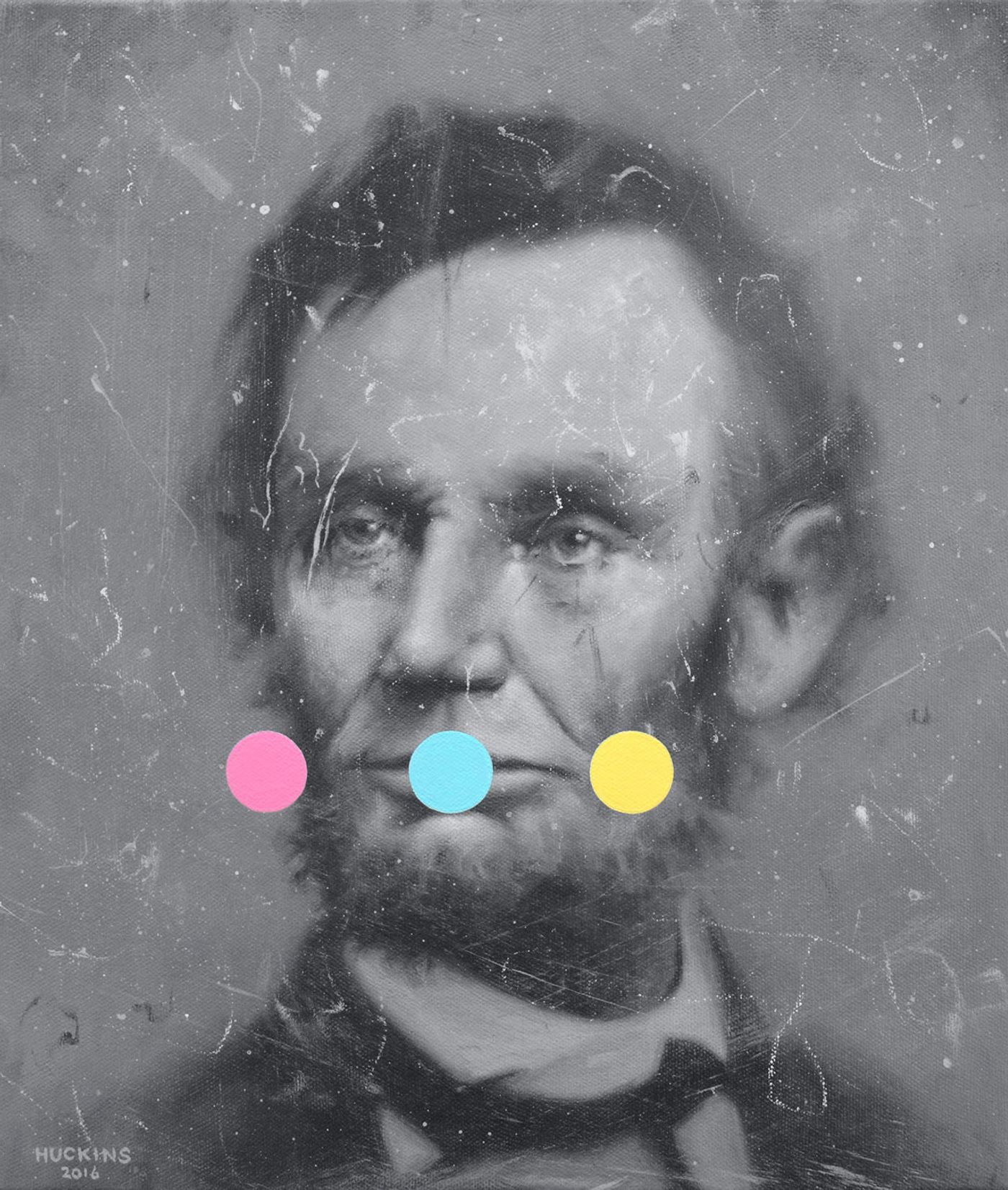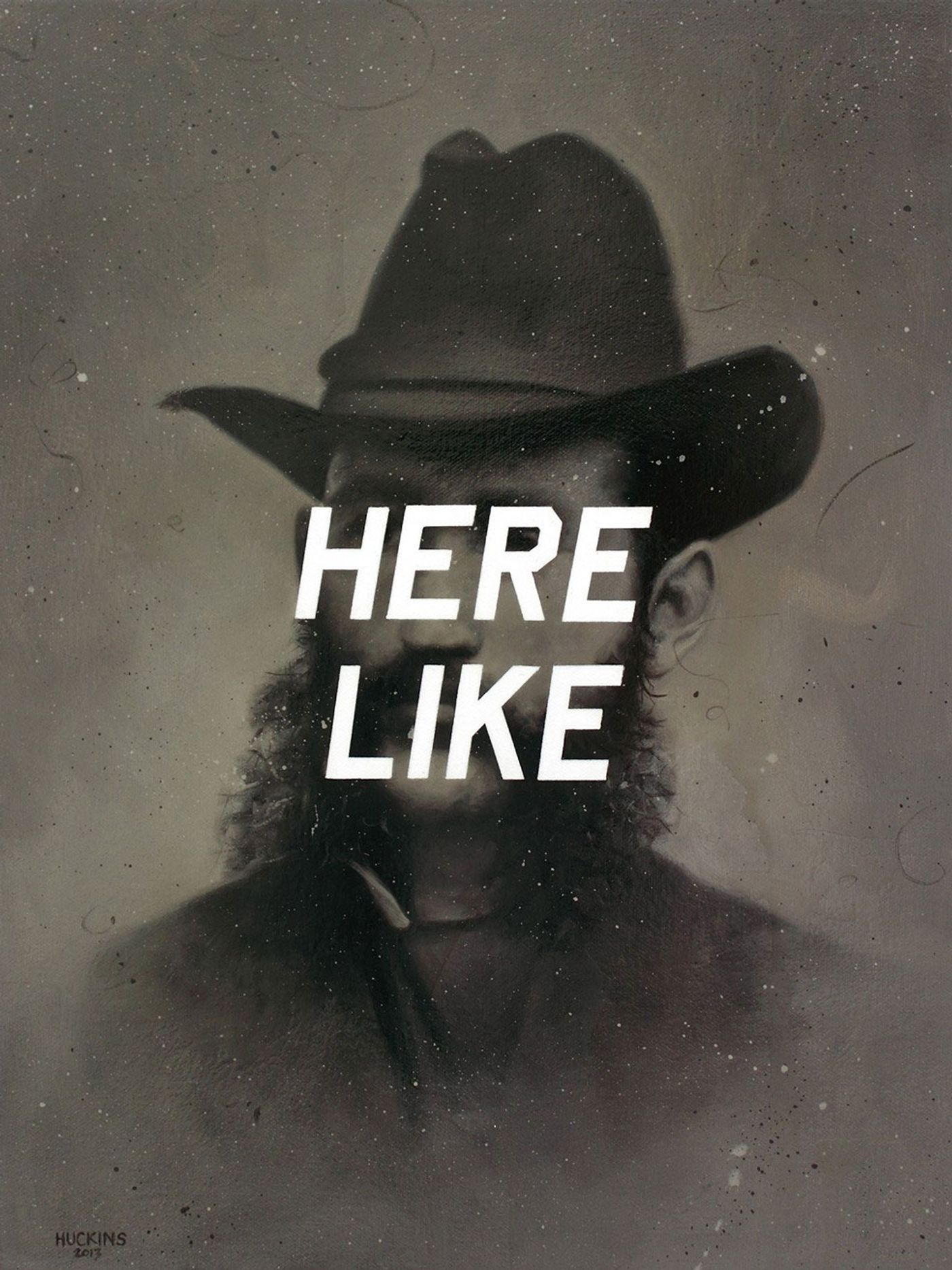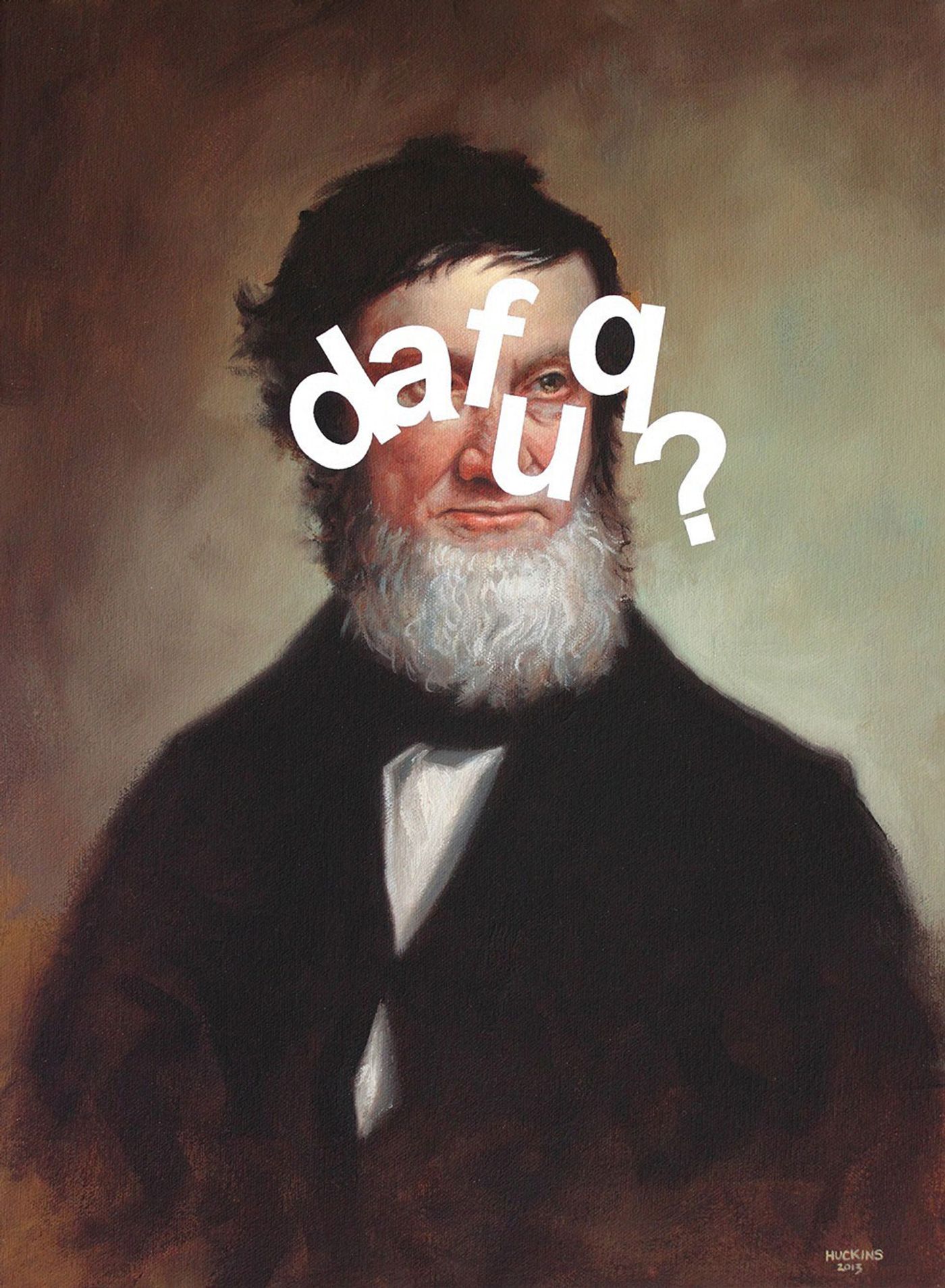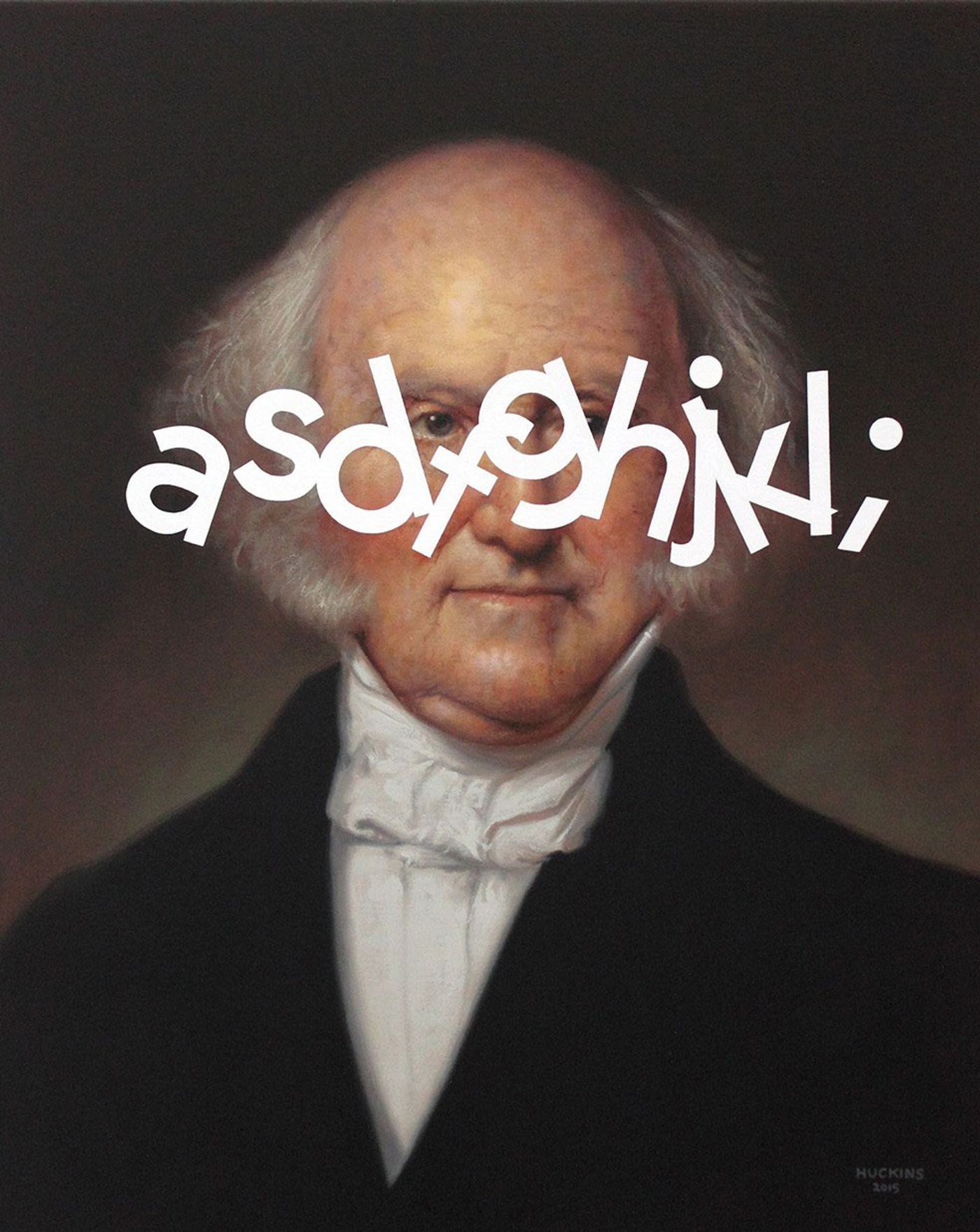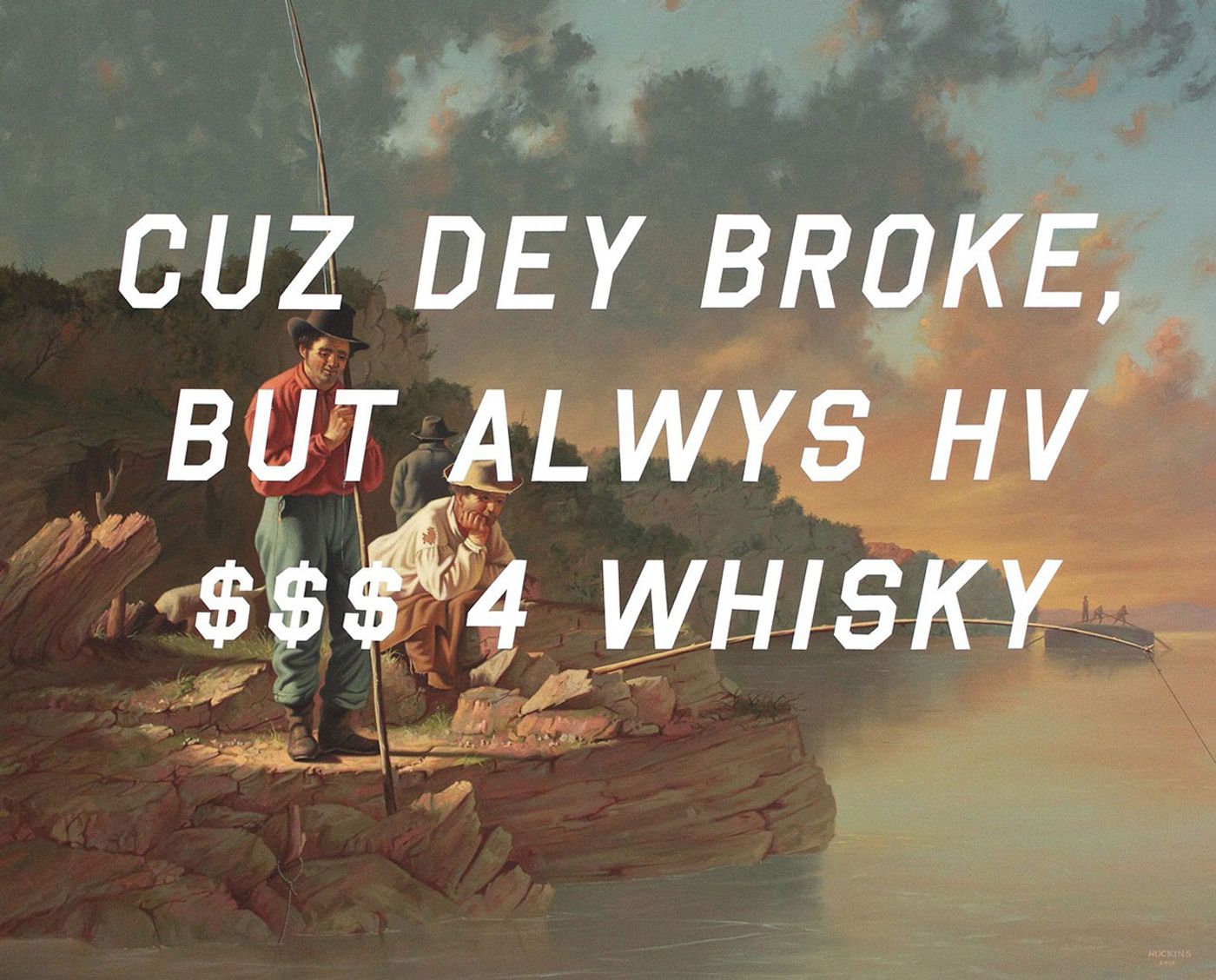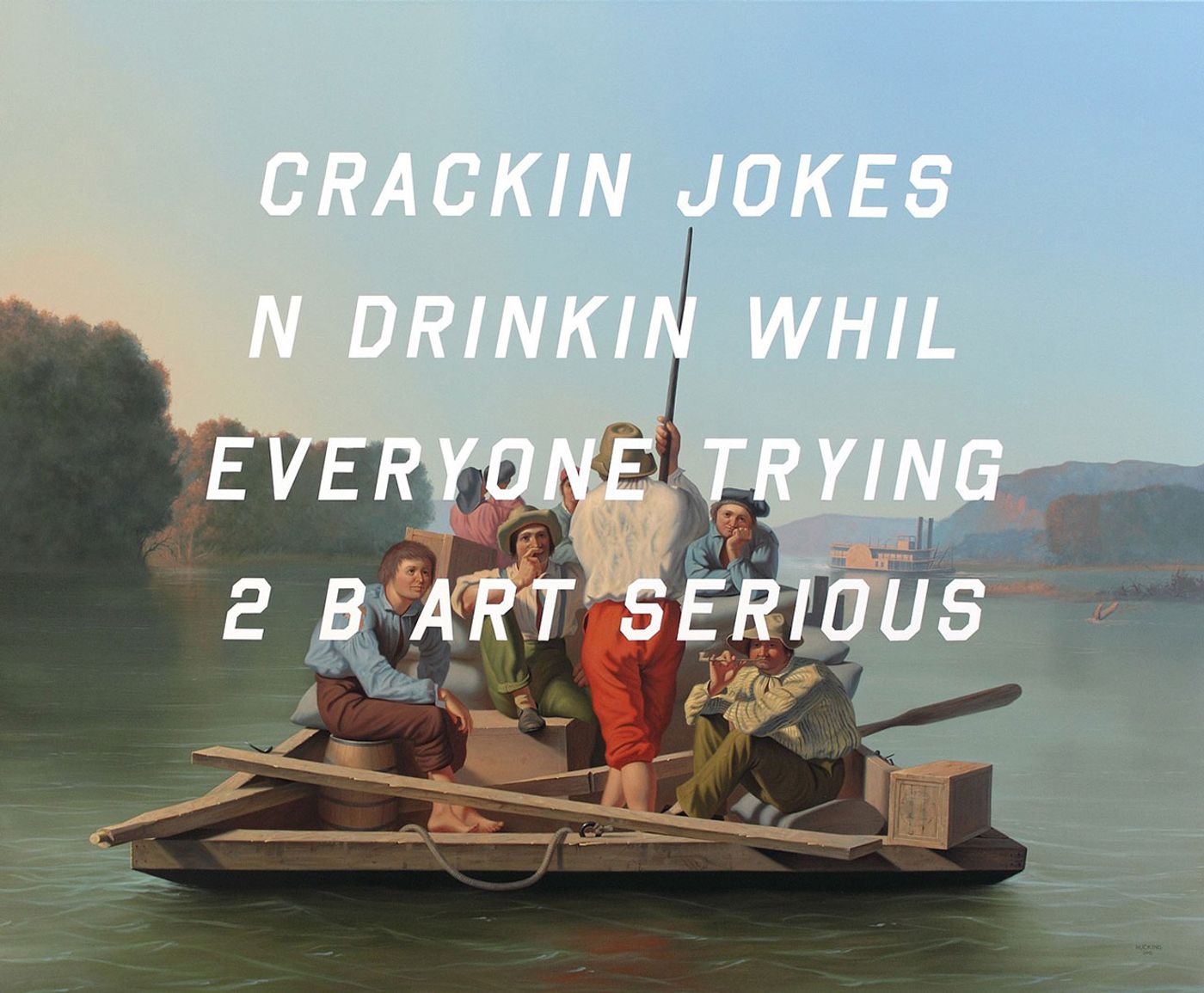
Mastering the Art of Memespeak with the Paintings of Shawn Huckins
Words by Alexander Mordoudack
Location
Mastering the Art of Memespeak with the Paintings of Shawn Huckins
Words by Alexander Mordoudack
Although history is made of the past, the past is not exclusively made of things that make history. It is inevitable therefore, that history becomes an ethical judgment. And it is precisely in response -or in liberating reaction- to this reasoning that we have been granted pop art.
Shawn Huckins paints through history. He does this rather literally through placing lines of modern dialogue onto the works of renowned masters. What is most interesting in his work, however, is not the mere juxtaposition of word and image, or the single symbolic code it produces. In foregoing the obvious option of digitally reproducing the paintings that he uses in his own work, Huckins does more than just exploit the opportunity to exhibit mastery—he affords himself the actual labour required for an examined recontextualization of the past. He starts by taping lettering on a blank canvas, and then paints the image on top; he then peels off the tape to reveal the lettering and thus create his own, personal new work.

Shawn Huckins, Elliot Tole Lane: Blah Blah Blah, acrylic on canvas, 30 x 28 in (76 x 71 cm), 2016. Private collection.
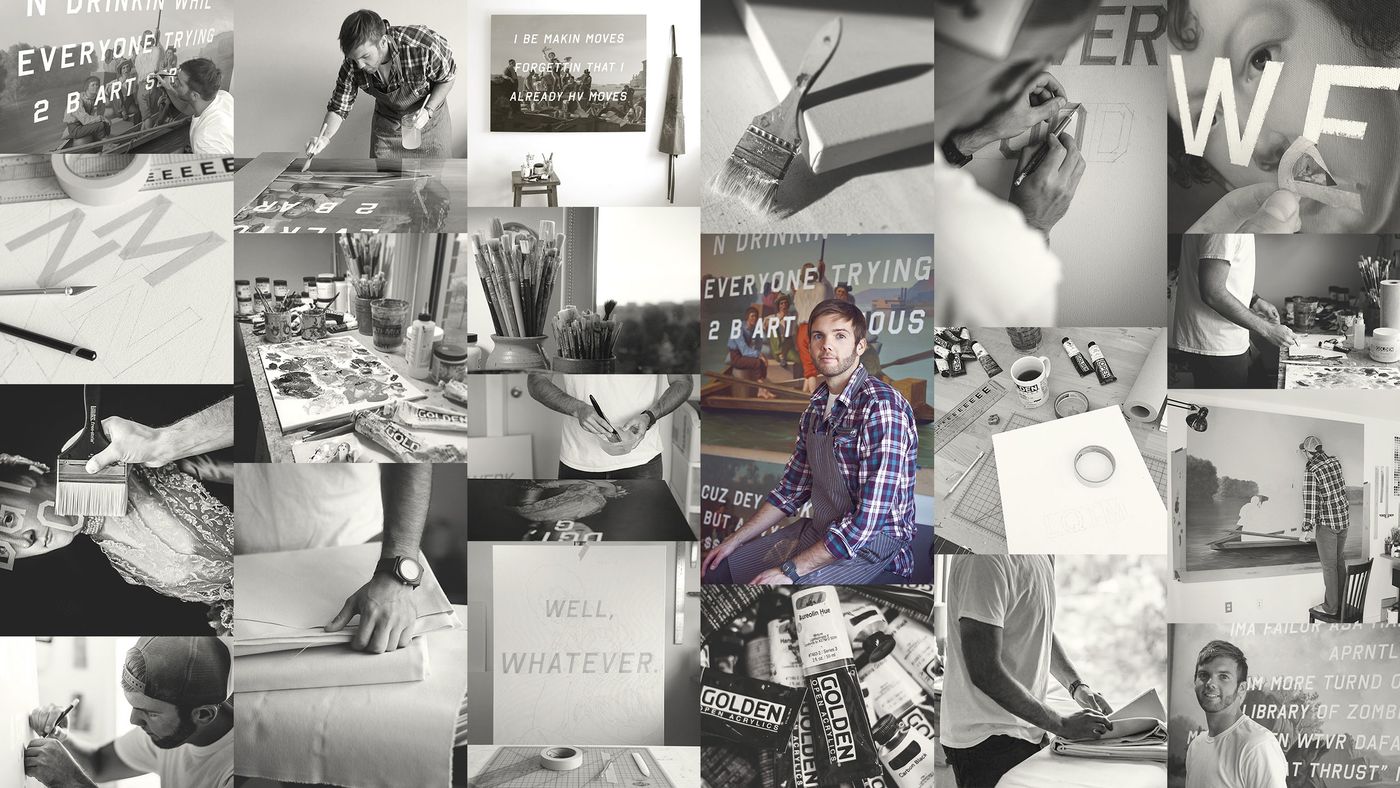
A collection of various studio / in-progress photographs over the last several years. © Shawn Huckins.

Shawn Huckins, Young Girl With Dog and Bird: Sorry To Tell You, But Your Girlfriend Looks Like A Farm Animal, acrylic on canvas, 40 x 32 in (102 x 81 cm), 2013. Private collection.

Shawn Huckins, Raftsmen Playing Cards: Everything Is Hilarious And Nothing Is Real, acrylic on canvas, 64 x 82 in (163 x 213 cm), 2016.
I couldn’t help but wonder if ever, as he peels off the tape, he feels as though doing an injustice to his meticulous work of reproduction. “Peeling the letters is one my favourite parts of the process” he says. “In no way do I feel I am jeopardizing the integrity of the time and effort I put into the work. Before the tape is peeled, the painting looks incomplete anyhow. It is the letters that bring the painting to life and completion.” One feels reassured by his answer, because such labour is what transforms what could otherwise dissolve into a trivialized study in contradiction, into so much more: Subversion is only possible through immersion, and vice versa. His passionate and learned immersion in both the work of painters he so evidently admires, like Bingham and Singleton, or Ruscha, as well as in the currency, in the temporal as well the practical merit, of language, dignifies his matching of perceived extremes -like Benjamin Franklin “LMAO-ing”.

Shawn Huckins, Unknown Young Cowboy: Lets Have A Good Life And Pretend That We Don't Know Each Other, acrylic on canvas,42 x 34 in (107 x 86 cm), 2016.

Shawn Huckins, Abraham Lincoln: Whatever, acrylic on canvas, 24 x 18 in (61 x 46 cm), 2015. Private collection.
Huckins often attributes at least part of his love for painting to the “Big Kid” on a school bus ride home. “One afternoon, I had to sit with the larger, kind of scary looking kid. He was several grades above me. I noticed he was drawing, and I started asking him what he was drawing and what things he was using. He got off the bus before me, but before he did, he ripped out one of his drawings and gave it to me. When I got home, I coloured in the drawing and asked my mom if I could get some sketch books and coloured pencils”.

Shawn Huckins, Politics In An Oyster House: Laughing My Ass Off, acrylic on canvas, 20 x 16 in (51 x 41 cm), 2016. Private collection.

Shawn Huckins, Politics In An Oyster House: Laughing My Ass Off (detail), acrylic on canvas, 20 x 16 in (51 x 41 cm), 2016. Private collection.
His work continues to somehow be about colouring in ripped pages from others’ sketchbooks in which the defining quality is not the work of the big kid, but the uncensored playfulness of the little kid. Huckins is at times actually ingenious in appropriating the works he loves, whether he is turning Hockney into a paint card, deconstructing Lichtenstein for a Lincoln portrait, or even finding Bob Ross in historical American painting. His next series is another pairing exercise that features “paintings of highly detailed landscapes, and superimposed on top are abstract colourful shapes in the form of houses close to where I live”. I can’t help but ask him, what quote would he put on his own self-portrait. His answer? “Dafuq.”

Shawn Huckins, John Tyler's Expression Of Surprise, Confusion, or Shock, acrylic on canvas, 20 x 16 in (51 x 41 cm), 2016.

Shawn Huckins, John Tyler's Expression Of Surprise, Confusion, or Shock (detail), acrylic on canvas, 20 x 16 in (51 x 41 cm), 2016.

Shawn Huckins, A Gorge In The Mountains: Lost, acrylic on canvas, 36 x 28 in (91 x 71 cm), 2016. Private collection.

Shawn Huckins, Sunrise On The Matterhorn: Laughing Out Loud Duh. , acrylic on canvas, 40 x 32 in (102 x 81 cm), 2014. Private collection.

Shawn Huckins, Mrs. John Winthrop, (Read My Lips Baby, You're Shit Out of Luck), acrylic + pencil on canvas, 35.5 x 29 in (90 x 74 cm)
2011. Private collection, Holladay, UT.
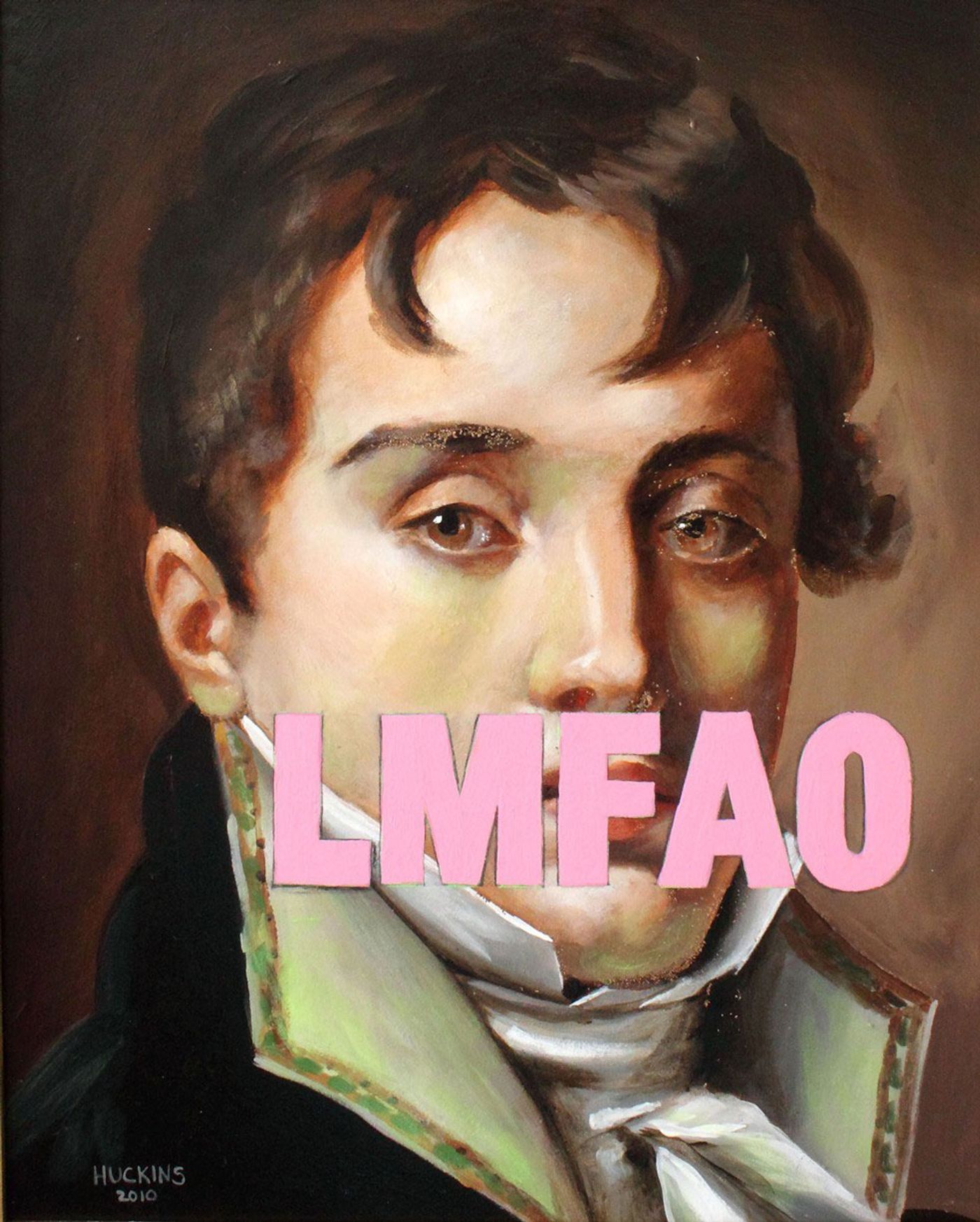
Shawn Huckins, INGRES: Laughing My Fucking Ass Off, acrylic on panel, 17.5 x 15.5 in (44 x 39 cm), 2010. Private collection New York, NY.

Shawn Huckins, The Jolly Flatboatmen In Port: I Be Making Moves Forgetting That I Already Have Moves (detail), acrylic on canvas
40 x 52 in (102 x 133 cm), 2015. Private collection.
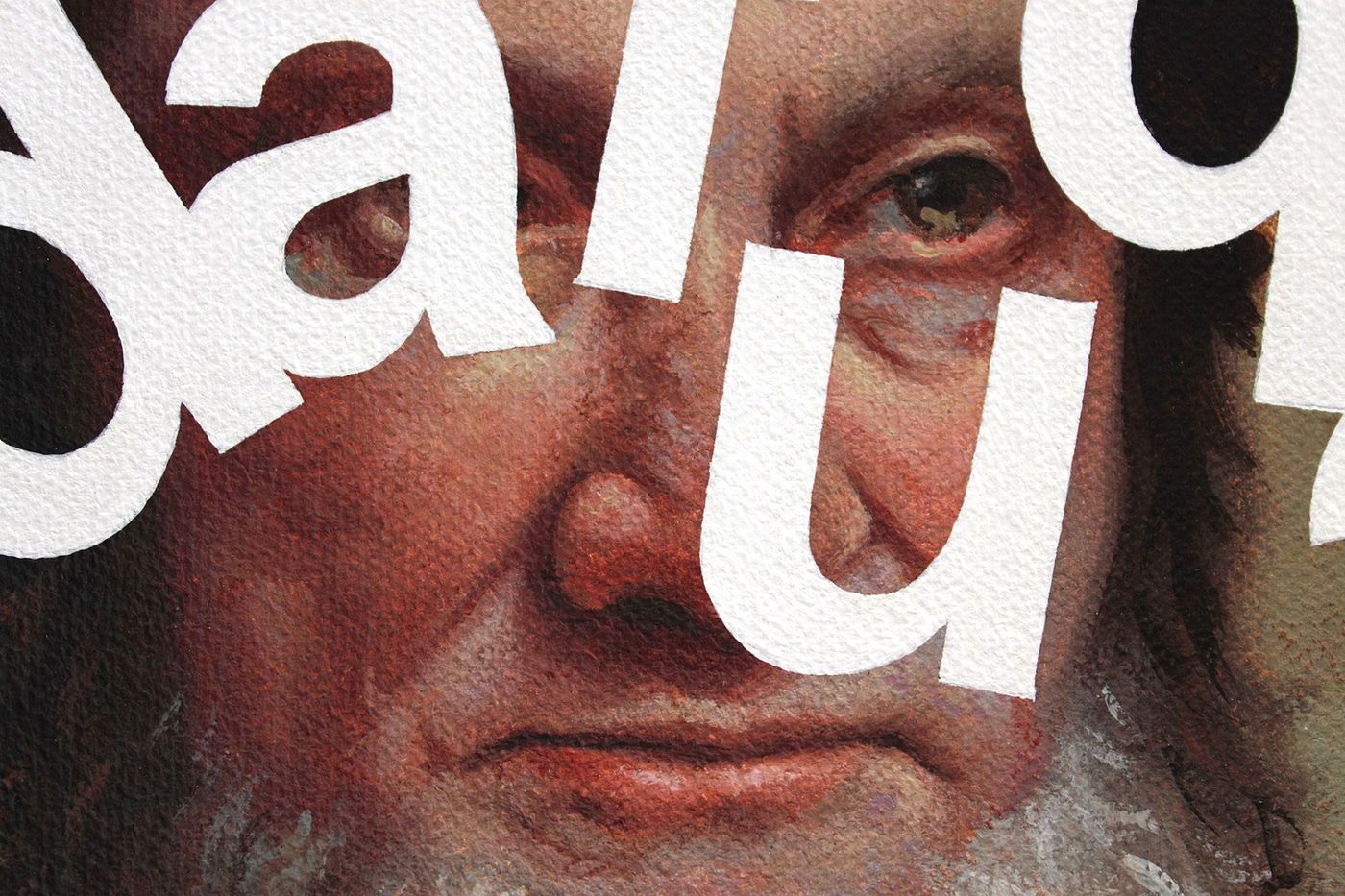
Shawn Huckins, James Beard: The Fuck?, acrylic on canvas, 16 x 12 in (41 x 30 cm), 2013. Private collection, Albany, NY.

Shawn Huckins, Mrs. John Winthrop, (Read My Lips Baby, You're Shit Out of Luck) (detail), acrylic + pencil on canvas, 35.5 x 29 in (90 x 74 cm), 2011. Private collection, Holladay, UT.

Shawn Huckins, Mary Ann Garrits: Know What I'm Saying, acrylic on canvas, 36 x 28 in (91 x 71 cm), 2014. Private collection.
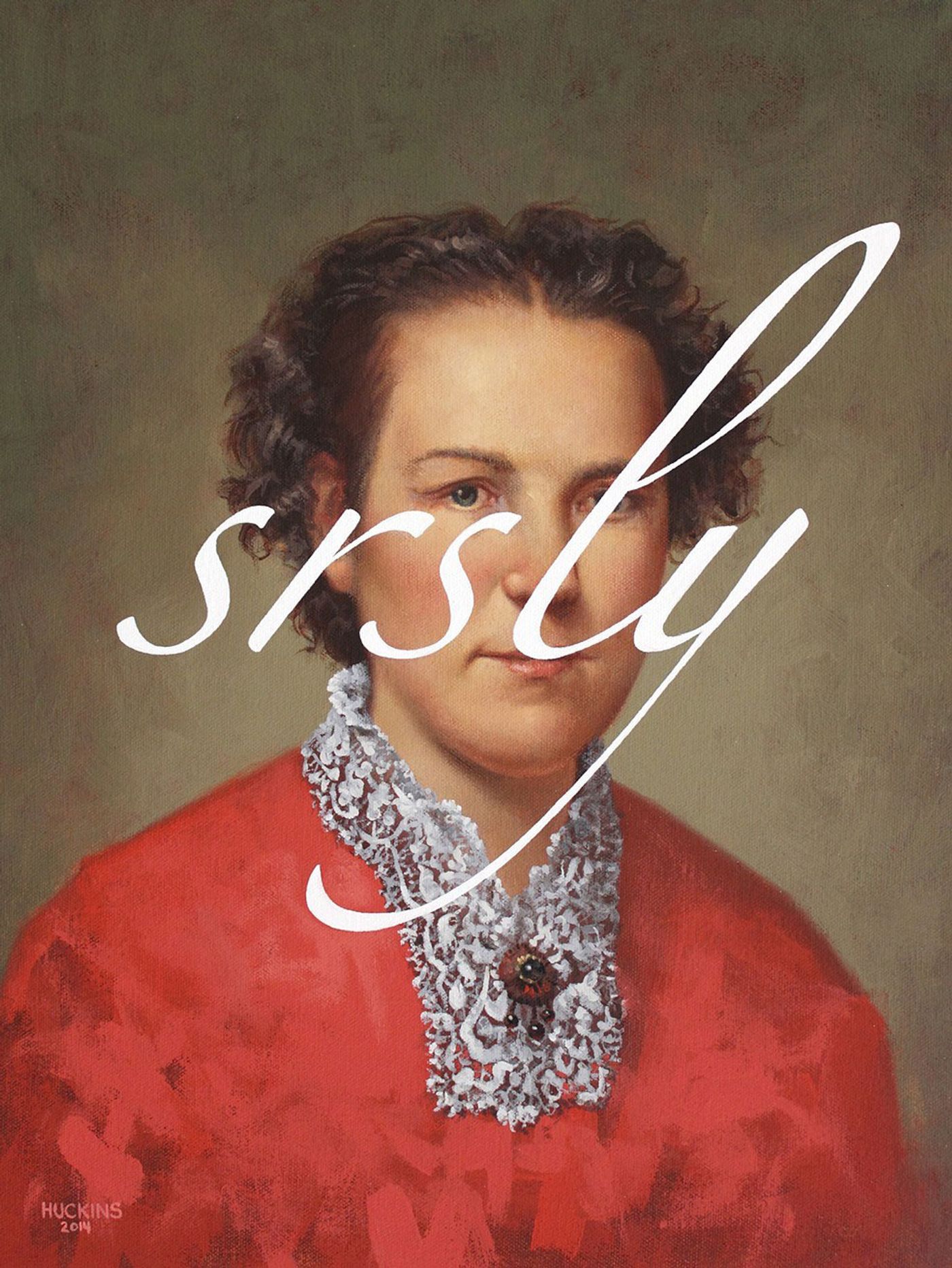
Shawn Huckins, A Lady: Seriously, acrylic on canvas, 16 x 12 in (41 x 30 cm)
2014. Private collection, Los Angeles, CA.

Shawn Huckins, Major James S Rollins: HAHAHA AHAHAHA HAHAHA, acrylic on canvas, 32 x 24 in (81 x 61 cm), 2013. Private collection.

Shawn Huckins, The Writing Master: Laughing Out Loud Laughing Out Loud Laughing Out Loud Laughing Out Loud, acrylic on canvas, 33 x 36 in (83 x 91 cm), 2013. Private collection.
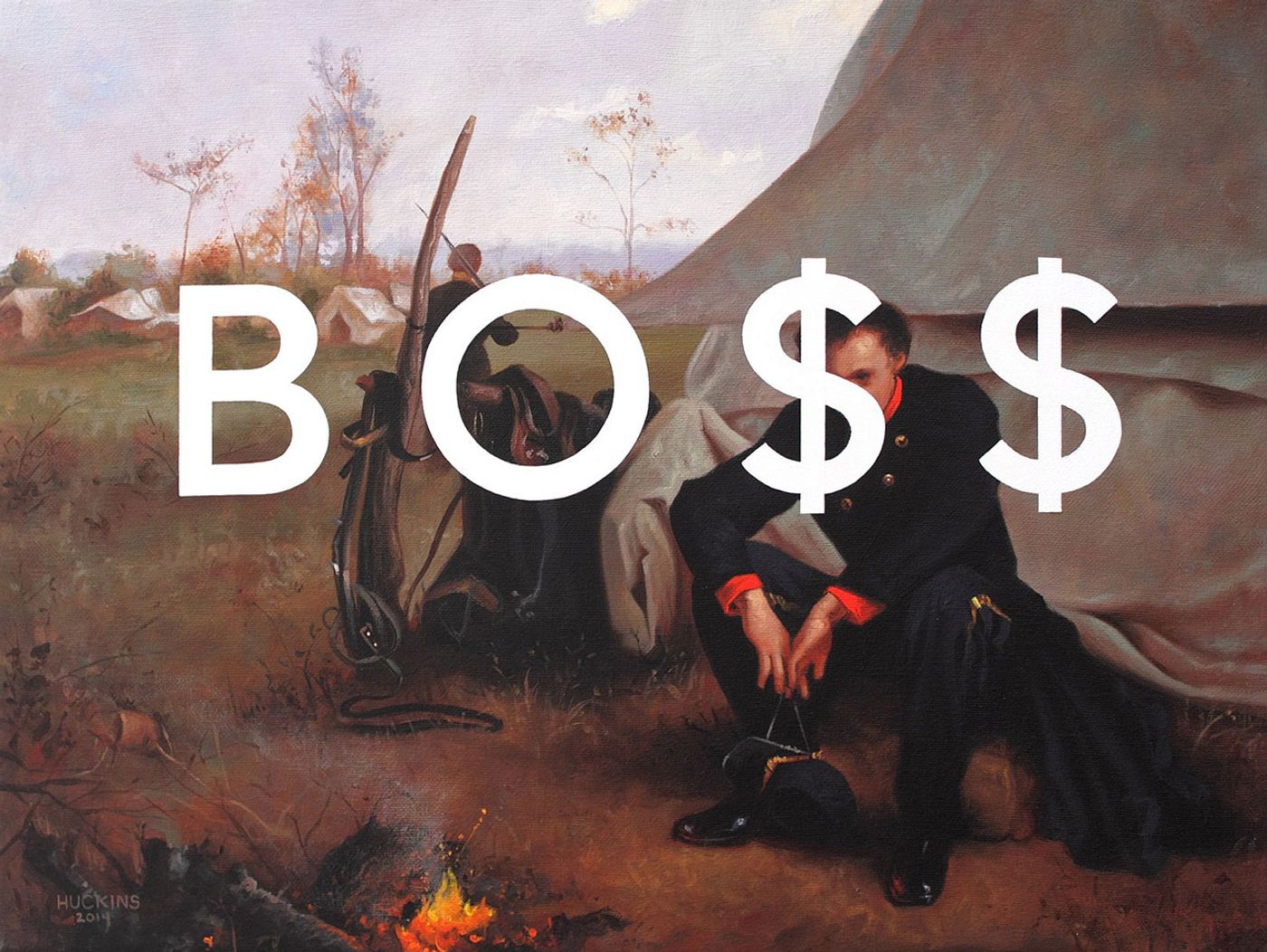
Shawn Huckins, At The Front: Boss, acrylic on canvas, 12 x 16 in (30 x 41 cm)
2014. Private collection, San Francisco, CA.


